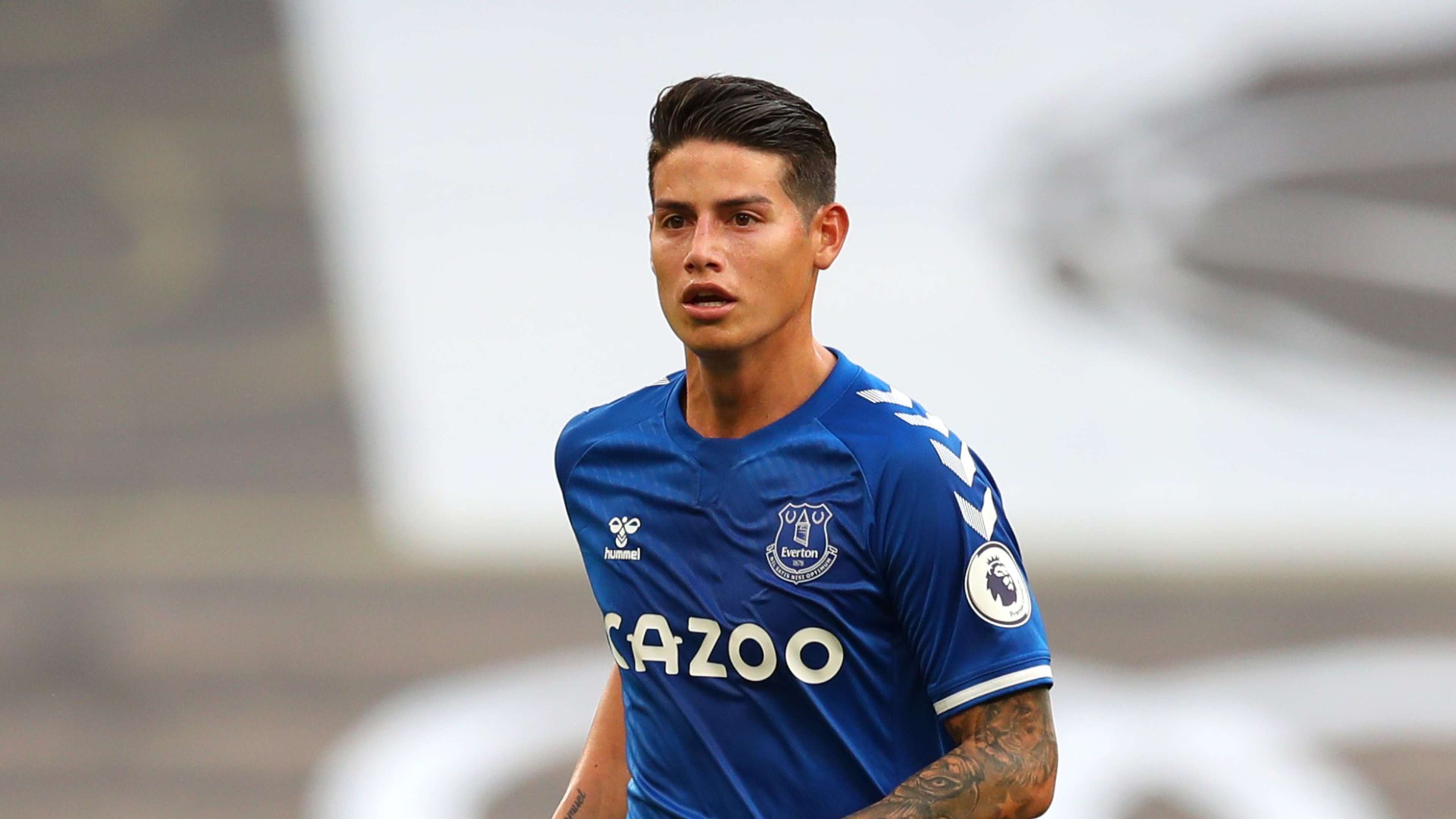While James Rodriguez's arrival at Goodison Park was greeted with no little scepticism, first impressions suggest that it could turn out to be one of the best deals of this seemingly endless summer transfer window.
If former club Banfield are correct in their assertions, and it turns out that Everton picked up the Colombia star on a free transfer from Real Madrid, then the Merseysiders have snared one of the world's most explosive talents for nothing.
One of the most frequently repeated concerns following James' move is that, like many cultured playmakers that have come before him, he will ultimately find the Premier League too fast to handle.
It is a legitimate question, and one that manager Carlo Ancelotti found time to answer after the star's extremely promising introduction to English football in Sunday's 1-0 defeat of Tottenham.
"James is not the fastest player in the world but he has a lot of quality. We have to use him to show his quality. He is not a winger, but he can come inside and receive the ball, he is very dangerous,” the Italian, who worked closely with James during his final season at Madrid in 2014-15 and his brief Bayern spell, told reporters.
“I am not worried about the physicality. If I was worried about that I would sign Usain Bolt, not James.
"The players that can play football, they don't need a lot of time to adapt. James knows what he has to do, Allan and [Abdoulaye] Doucoure the same. I just said show your quality and they did. We had a good combination in midfield. Last season we had players with quality on the ball but you also have to play without the ball.”
 Getty Images
Getty ImagesSunday's clash saw James line up on the right side of a three-man attack, with Dominic Calvert-Lewin and Richarlison completing the trident and fellow debutants Doucoure and Allan further back in midfield.
The presence of that energetic pair was key to Everton's strategy. James, the main creative spark in the Toffees line-up, was kept in close company at all times to avoid becoming isolated by Spurs' pressing defence and kept the wide expanses of the pitch in front of him at all times.
With the pressure lifted by his team-mates, he could focus on drifting inside and looking for his attacking partners, who stretched Tottenham one way and another with their constant movement.
James finished the match with five chances created, an outstanding tally considering he had spent less than a week with his new team-mates. He barely moved from his wide posting, and contributed to Everton's defensive efforts on a sporadic basis at best; but he ensured he was at the centre of the action – only Lucas Digne registered more touches out of the whole starting XI - and there was palpable excitement every time he received the ball as he jinked and passed Spurs into submission.
Indeed, if Richarlison had shown a similar level of sharpness and not squandered a host of opportunities laid on by the Colombian, particularly through his exquisite cross-field passes that gave the Londoners constant headaches, the visitors might have won by a far more comfortable margin.
It will have come as a relief to the 29-year-old to have taken the pitch at all, given the manner in which he was frozen out of the Madrid set-up in both of Zinedine Zidane's spells on the bench. The Frenchman made scant use of James' talents, a phenomenon that might well be related to that perceived lack of speed.
“There are different priorities, like how many kilometres you ran, how many balls you hit well,” Francisco 'Paco' Maturana, coach of the legendary Colombia team of the 1990s, explained to A la Contra.
“Today, it seems that the pause [on the ball] is not important, when it is the key to everything good that might happen.”
Maturana, of course, worked for years with the gloriously laid-back talents of Carlos Valderrama, whose pedestrian wizardry complemented the more explosive, direct impact of stars like Faustino Asprilla, Freddy Rincon and Adolfo 'El Tren' Valencia.
Similarly, James' languid style has been allowed to flourish at international level over the last decade as, nurtured by coach Jose Pekerman and supported by hard-working water carriers like Wilmar Barrios behind and powerful attackers in the vein of Radamel Falcao, Luis Muriel and, most recently, Duvan Zapata, he and his dazzling left foot have led the Cafetero to consecutive World Cup knockout finishes.
 Getty Images
Getty ImagesPerhaps the playmaker has been unfortunate in spending most of his professional career in two teams, post-Ancelotti Madrid and Bayern, that prioritised velocity and dynamism over individual magic, leaving him on the margins as a luxury player who never quite staked his claim to a regular spot.
Indeed, as the Madrid press never tired of pointing out, the only time James was seen at maximum speed it was on the roads of the Spanish capital in his Audi when flying past police controls.
If any coach knows how to coax the best out of James, however, it is Ancelotti, a man who appreciates that in the hectic world of modern elite football there can still be room, properly utilised, for a player who prefers to take one, two or three touches before moving the ball on to its next destination.
His Everton side are far from the finished article, but if they can build on their encouraging first outing and continue to keep the Colombian in the thick of the action he will continue to show the Premier League that there is far more to the game than mere speed and brute force.


